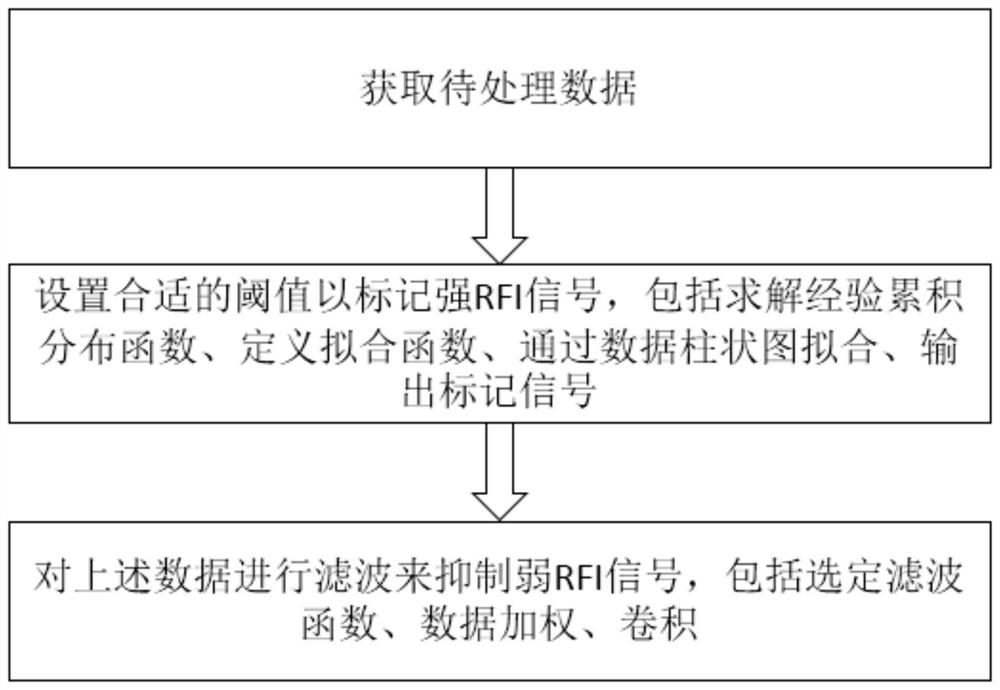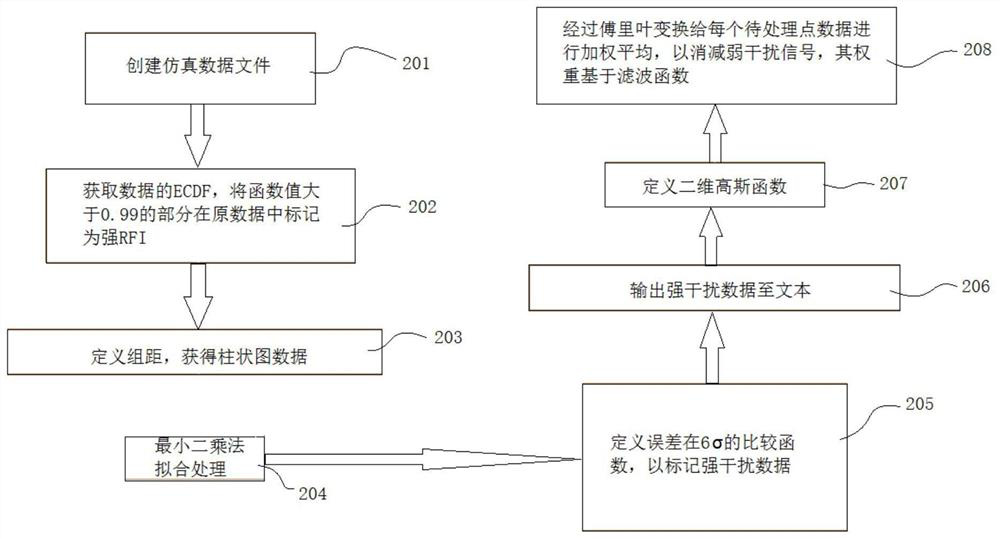A data processing method and device for radio frequency interference
A data processing device and radio frequency interference technology, applied in transmission monitoring, electrical components, transmission systems, etc., can solve problems such as huge data volume, poor effect, and increased difficulty in data processing
- Summary
- Abstract
- Description
- Claims
- Application Information
AI Technical Summary
Problems solved by technology
Method used
Image
Examples
Embodiment 1
[0055] figure 2 It is a schematic diagram of the data processing method of radio frequency interference in the preferred embodiment 1 of the present invention, such as figure 1 , figure 2 As shown, the data processing method for radio frequency interference in this embodiment may include:
[0056] Step 101. Obtain the data to be processed and its filter function, the data to be processed is the processed time-frequency domain data obtained by the radio equipment, and the filter function is obtained based on a kernel function;
[0057] In this embodiment, the kernel function is used to filter the time-frequency domain data acquired by the radio equipment. The amount of image data acquired is increasing, and the introduction of the kernel function avoids the "curse of dimensionality" and greatly reduces the amount of calculation. On the other hand, the fusion performance of the kernel function is very good, and it can be combined with different algorithms to form a variety ...
Embodiment 2
[0067] image 3 It is a schematic diagram of the data processing method of radio frequency interference in the second preferred embodiment of the present invention, which can be roughly divided into two parts: 1. Identify and mark strong radio frequency interference data; 2. Identify weak radio frequency interference data and perform reduction processing. This part is related to implementation The method of Example 1 is similar, such as image 3 As shown, the method of this embodiment may include:
[0068] Step 201. Obtain the time-frequency domain data to be processed, the image data to be processed is the time-series data acquired by the radio equipment converted to the time-frequency domain data,
[0069] Step 202. Acquire the ECDF of the data, and mark the part with the function value greater than 0.99 as strong RFI.
[0070] Step 203, process the obtained optimized data of all points to be processed to obtain histogram data based on the group distance, wherein the group...
PUM
 Login to View More
Login to View More Abstract
Description
Claims
Application Information
 Login to View More
Login to View More - R&D
- Intellectual Property
- Life Sciences
- Materials
- Tech Scout
- Unparalleled Data Quality
- Higher Quality Content
- 60% Fewer Hallucinations
Browse by: Latest US Patents, China's latest patents, Technical Efficacy Thesaurus, Application Domain, Technology Topic, Popular Technical Reports.
© 2025 PatSnap. All rights reserved.Legal|Privacy policy|Modern Slavery Act Transparency Statement|Sitemap|About US| Contact US: help@patsnap.com



